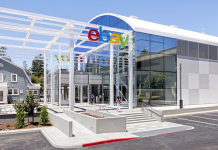by Debra Fiakas CFA
Unmanned aerial vehicles (UAVs) had their starting point in military exercises, carrying surveillance cameras and even bombs to sensitive sites. Drones as we have come to call them have also zoomed across the horizons of adventuresome consumers, who see sport and entertainment possibilities. However, drones offer time and cost savings, quality and accuracy in data gathering and safety to a host of scientists, engineers and infrastructure operators.
According to industry research firm Markets and Markets, the unmanned aerial market is estimated to be $13.2 billion in the current year and has the potential to reach $28.3 billion by 2022. A good share of the 13.5% compound annual growth is expected to be driven by new demand for agricultural and environmental applications. Indeed, Price Waterhouse Coopers estimates the addressable market for drones in the agriculture market alone could reach $32.2 billion by 2025. The PWC market size estimate seems to eclipse Markets and Markets figures. At least Markets and Markets agrees that agriculture is the dominant growth driver for UAVs, with an estimated 30% compound annual growth estimate for the this sector through 2022.
While UAVs might not rise to the level of the electron microscope as a breakthrough technology enabling transformative innovation, it is a tool that could deliver significant energy savings and economic benefits. For investors with a focus in energy, environment or conservation, a stake in a UAV producer should be interesting.
Small UAVs have reached a price level delivering a cost effective way to collect high resolution images that can inform farmers, animal control personnel or environmentalists. UAVs can be deployed rapidly to even the most remote locations. Farmers can detect water and nutritional stress or monitor insect damage. Wildlife authorities can observe poaching activity in real time, giving them the chance to capture perpetrators in the act. Scientists are gaining access to data on plants and animals in even the most remote and inaccessible terrain or conditions.
Aerovironment (AVAV: Nasdaq) has had a berth in our Mothers of Invention Index of companies offering innovative technologies that save energy or otherwise impact resource utilization. It is the largest supplier of UAVs to the U.S. military and is gaining a reputation around the world as a producer of reliable commercial drones. The company offers a half dozen different UAV models, from the solar-powered Helios with its 247 foot wingspan to the ‘bird-sized’ Nano Air Vehicle. The Raven was originally deployed by the U.S. military, but is also useful in commercial applications as well. With a wingspan of 4.5 feet and total weight of 4.2 pounds, the Raven can be launch by hand and deliver aerial observations up to 10 kilometers by either a daylight or infrared camera.
The company delivered $253.3 million in total sales in the twelve months ending July 2016, providing $4.3 million in net income or $0.18 per share. As much as 4.2% of sales were converted to operating cash flow during this period, helping bring cash on the balance sheet to $224.1 million. Aerovironment has no debt and is able to use its ample internally generated cash for new product development.
AVAV has a follow of at least a half dozen analysts who have published estimates of its future sales and earnings. In the quarter ending July 2016, Aerovironment disappointed investors with a deeper than expected loss. The bad news caused analysts to trim expectations for the quarter ending October 2016, but long-term expectations remained intact. The consensus for the current fiscal year ending April 2017 is for $0.52 in earnings per share on about $290 million in sales.
Financial results for the October quarter are expected this week. Expect analyst to ask management about its most recent product innovation, the Quantix, which was introduced at the Drone World Expo in California. Quantix has been designed to deliver efficiency and convenience. It can collect high-resolution images on at least 400 acres of land during a single flight and then transmit the data to a cloud-service. Users can access the data through a companion tablet. The Quantix model is aimed primarily at, guess who – farmers! Anyone who has ever had to walk a corn field looking for signs of drought or bugs will understand the appeal of a fast moving drone with a high resolution camera. Not yet priced, Quantix is expected to contribute to revenue in last fiscal year 2017 or early fiscal year 2018.
Debra Fiakas is the Managing Director of Crystal Equity Research, an alternative research resource on small capitalization companies in selected industries.
Neither the author of the Small Cap Strategist web log, Crystal Equity Research nor its affiliates have a beneficial interest in the companies mentioned herein.






